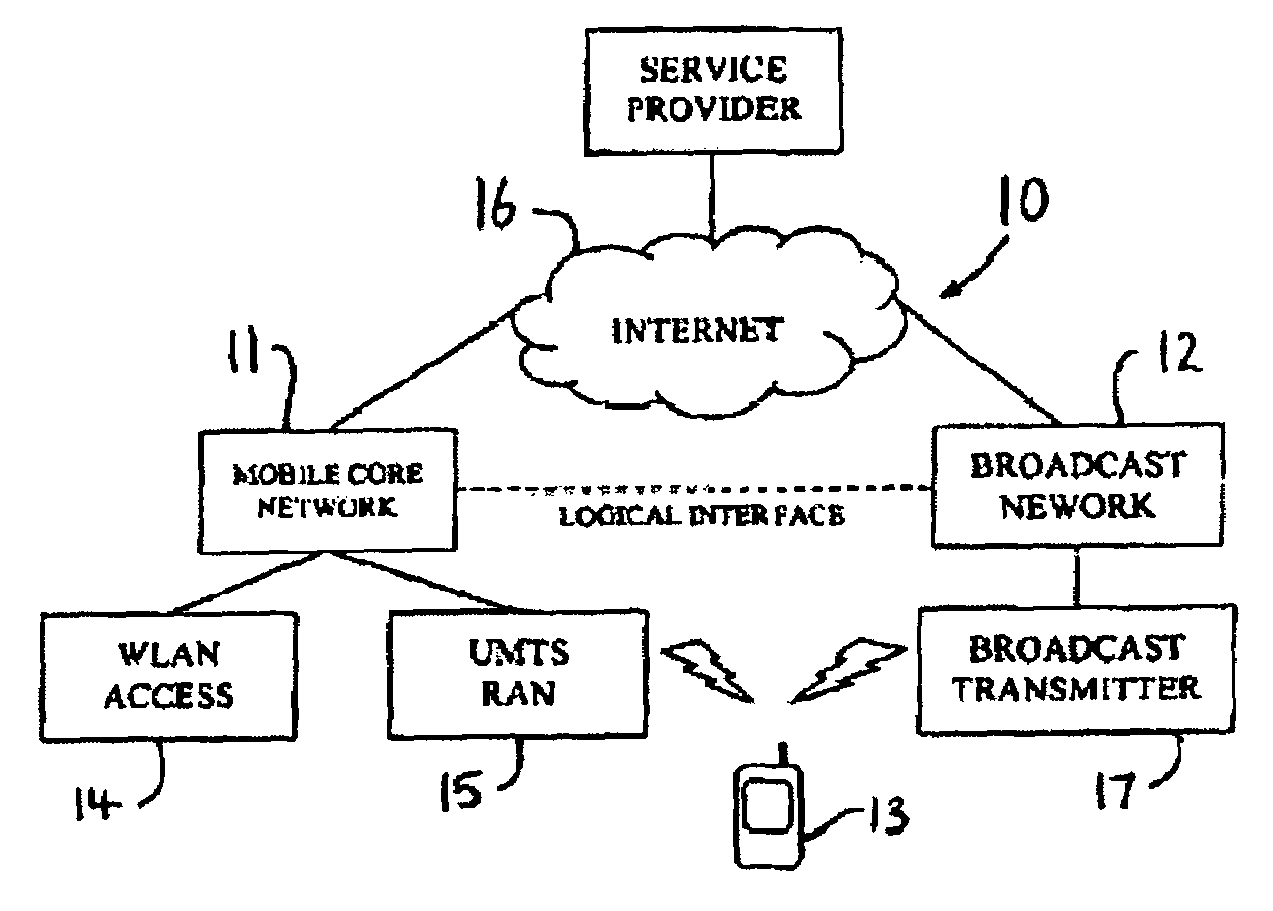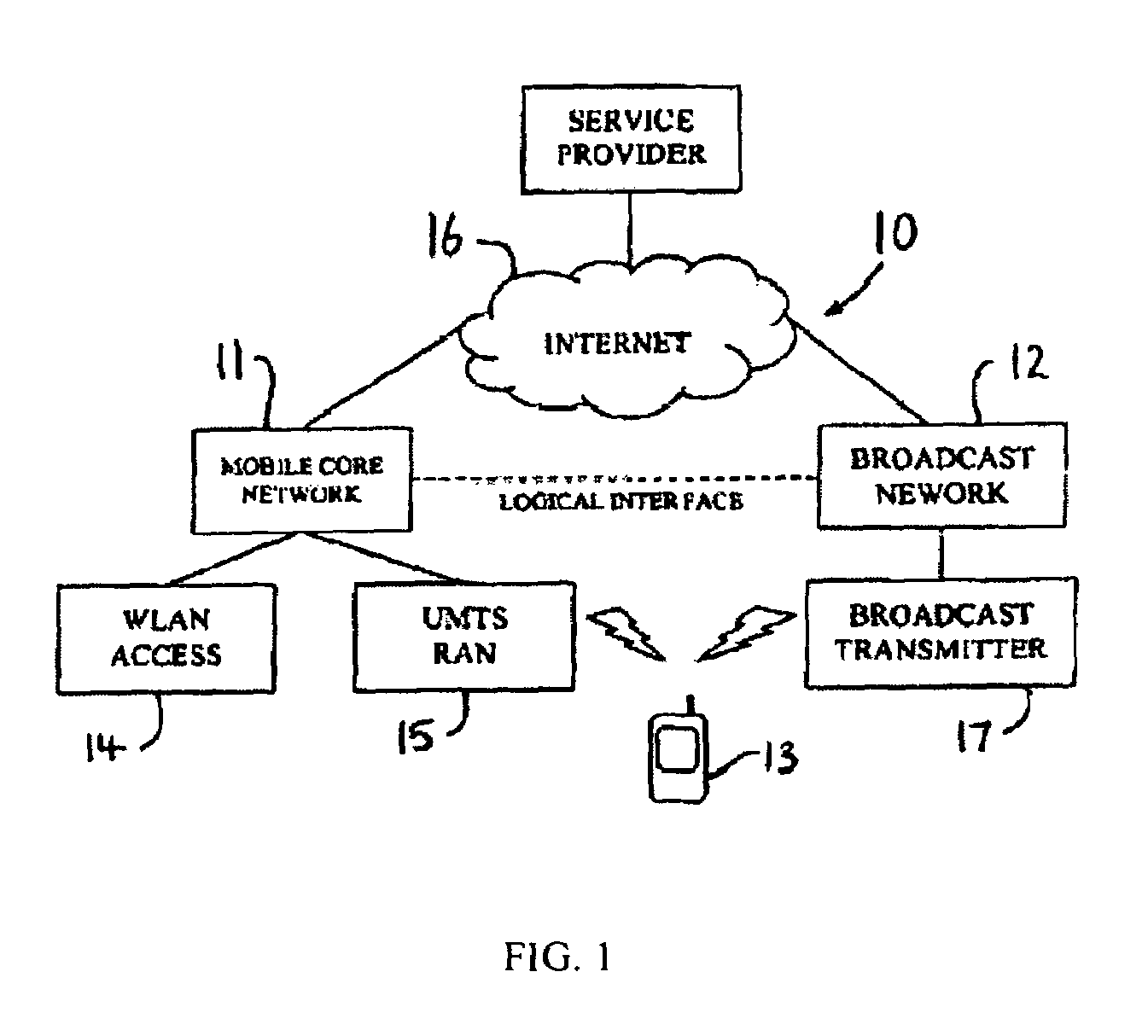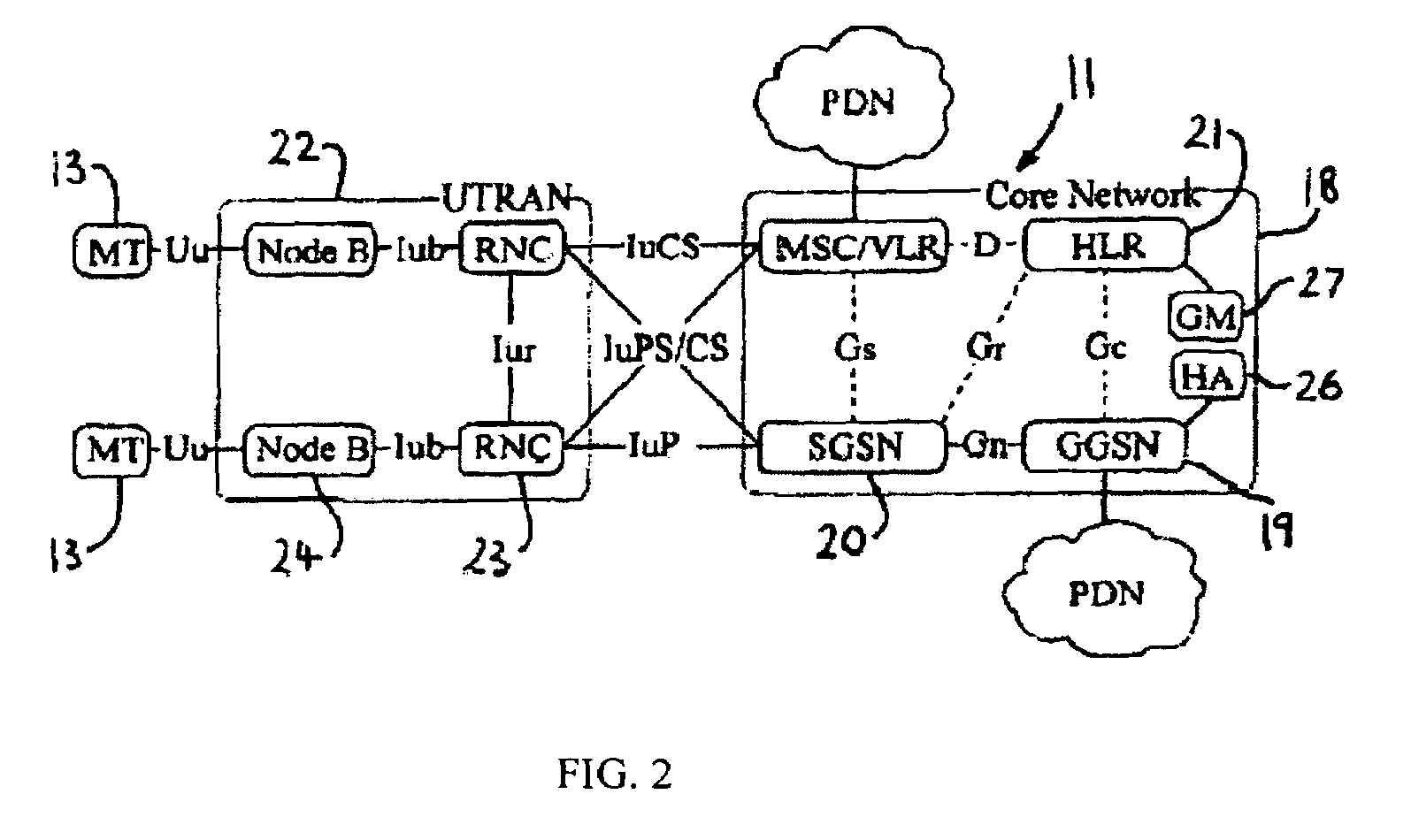Method of discovering multi-mode mobile terminals
a mobile terminal and multi-mode technology, applied in the field of discovering multi-mode mobile terminals, can solve the problems of sparse information available to the system about exact locations and areas, and achieve the effect of facilitating inter-network working
- Summary
- Abstract
- Description
- Claims
- Application Information
AI Technical Summary
Benefits of technology
Problems solved by technology
Method used
Image
Examples
Embodiment Construction
[0070]Referring to FIG. 1 a heterogeneous network generally identified by reference numeral 10 comprises a mobile network 11 and a broadcast network 12. Each of the two networks 11, 12 is under a different administrative domain and they are heterogeneous i.e. the protocols for access, transmission and / or handling of data is different between the networks. A Multi-mode Mobile Terminal (MMT) 13 has interfaces (or a single re-configurable interface) for accessing both of the networks 11, 12. The mobile network 11 is the home radio communication network of the MMT 13 i.e. that network providing a permanent point of contact for the MMT 13 e.g. by telephone number, network layer address (e.g. IP address) and may also be that network responsible for Authentication, Authorisation and Accounting (AAA), billing the user and storing user profiles for example. The broadcast network 12 may be considered a foreign radio communication network of the MMT 13 as it may only be used occasionally by th...
PUM
 Login to View More
Login to View More Abstract
Description
Claims
Application Information
 Login to View More
Login to View More - R&D
- Intellectual Property
- Life Sciences
- Materials
- Tech Scout
- Unparalleled Data Quality
- Higher Quality Content
- 60% Fewer Hallucinations
Browse by: Latest US Patents, China's latest patents, Technical Efficacy Thesaurus, Application Domain, Technology Topic, Popular Technical Reports.
© 2025 PatSnap. All rights reserved.Legal|Privacy policy|Modern Slavery Act Transparency Statement|Sitemap|About US| Contact US: help@patsnap.com



